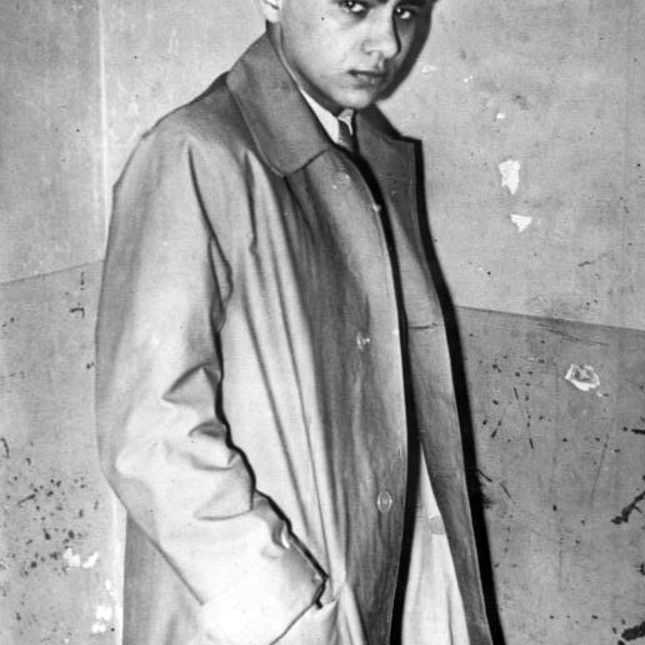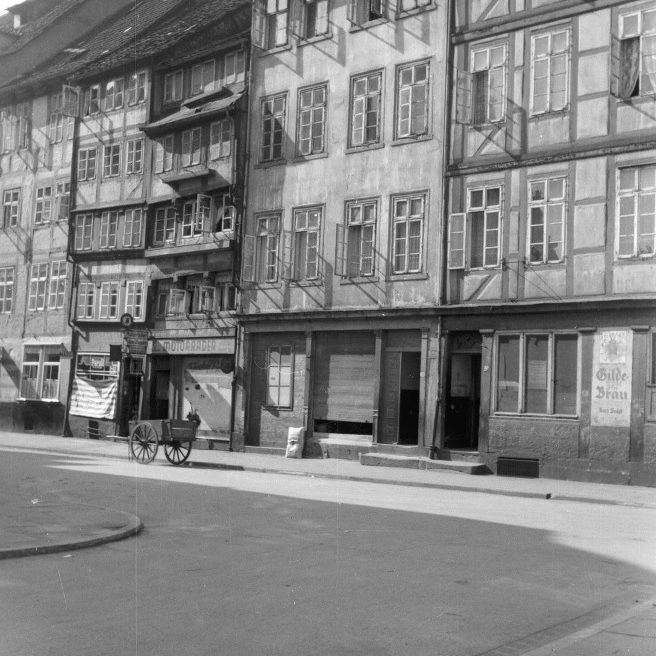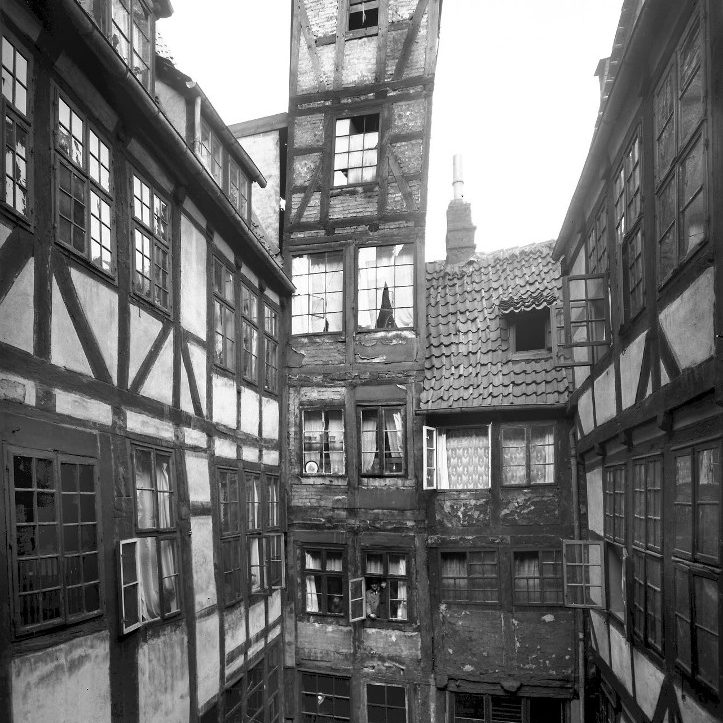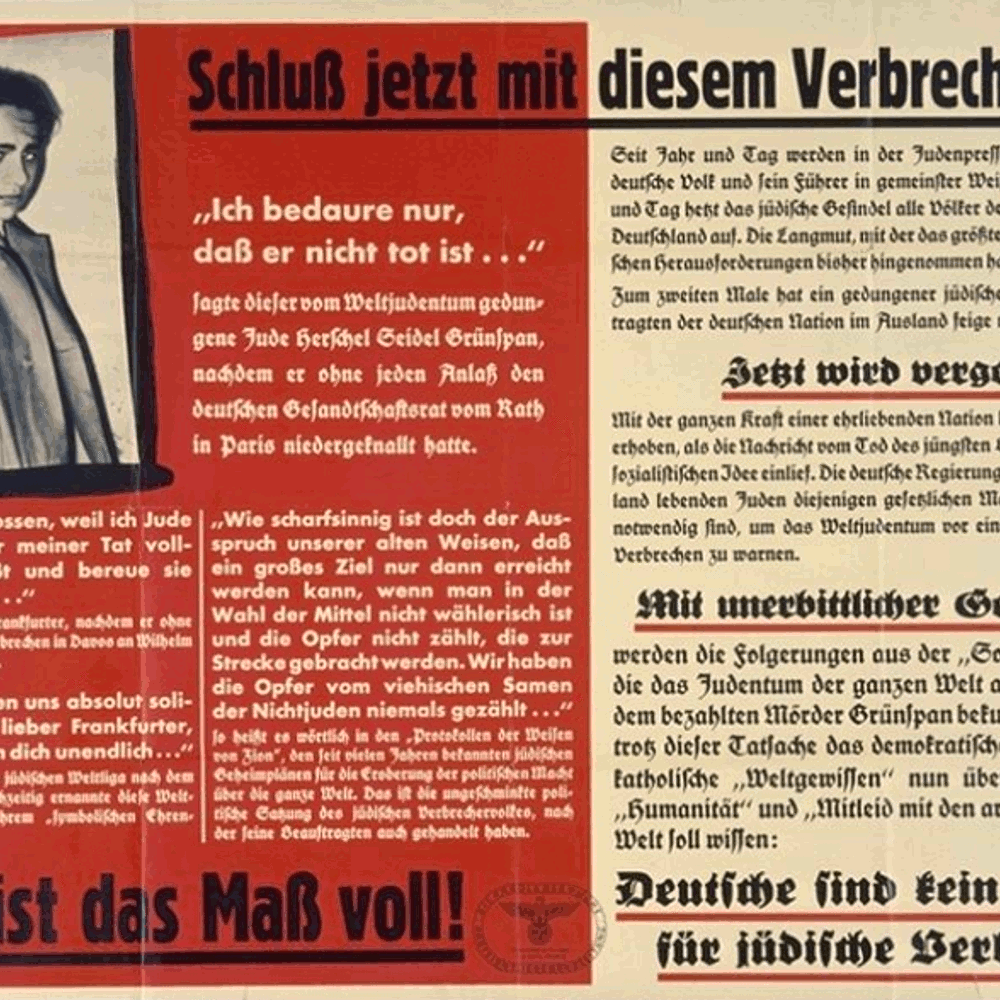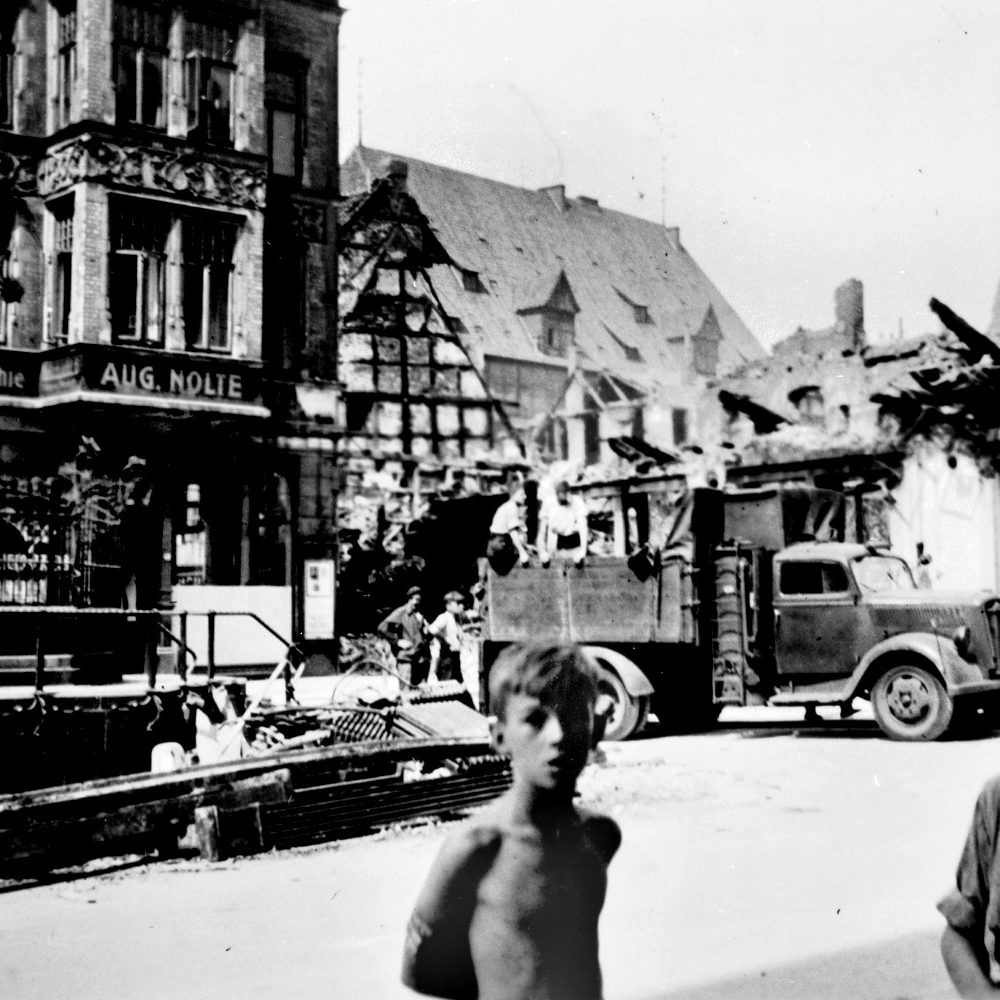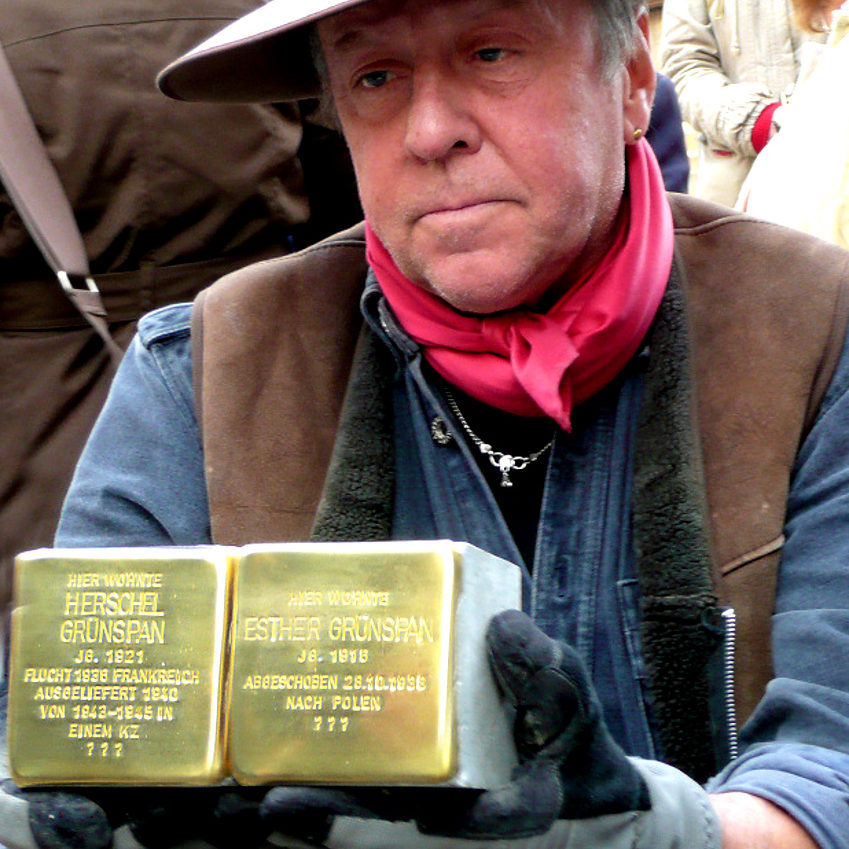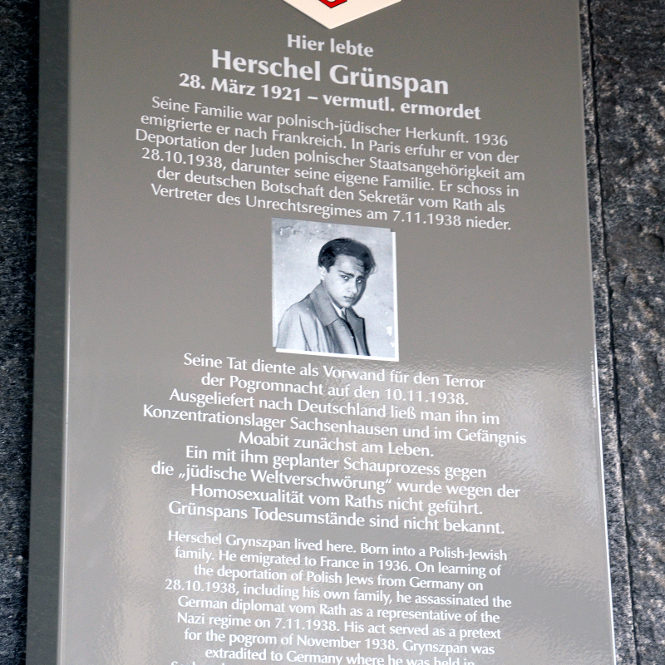Herschel Grünspan grows up here in Burgstrasse before living in Paris as an illegal immigrant. Whilst there, he hears of his family’s deportation to Poland. His shooting of an official at the German embassy provides the National Socialists with the long-awaited excuse to radically intensify their anti-Jewish measures.
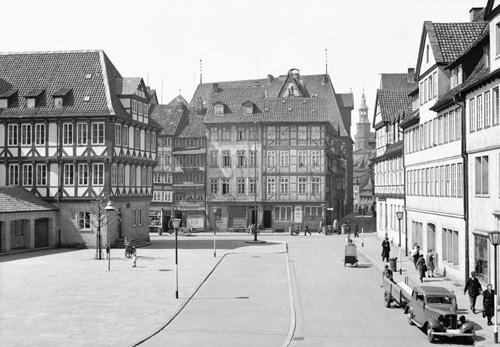
Life in the Altstadt
Herschel Feibel Grünspan (also spelled: Grynszpan) was born in March 1921 at Burgstrasse 36 in the heart of Hanover’s Altstadt [Old Town]. His parents had emigrated to Germany from the Russian part of Poland as recently as 1911. After the founding of Poland, they receive Polish citizenship in 1919, however they continue to live in Germany. The father is a tailor and from time to time has his own tailoring workshop a few houses away. But in the latter stages of the world economic crisis of 1933/34, the family is forced to rely on additional public welfare assistance. Their living conditions are tough: four of the couple’s seven children die young, five people share the 40 square metre [430.5 square feet] apartment on the second floor [USA: third floor] with no bathroom and a communal toilet plus washhouse in the backyard. The other tenants also have an Eastern Jewish background, as does the landlord Benjamin Fischel who has a shop on the ground floor.
From Hanover to Paris
Herschel grows up in Burgstrasse and attends the nearby town school until the age of fourteen. He is slim and very small. Deeply religious, on finishing compulsory education he switches to a Jewish faith school in Frankfurt am Main. However, he soon abandons the five-year apprenticeship and, in July 1936, goes to live with an aunt in Brussels and then to live with an uncle in Paris but without an entry permit. As an illegal immigrant he lives by doing odd jobs – the French authorities had expelled him as an undesirable alien on 15 August 1938 and because his papers have expired, he is barred from returning to Germany.
It is whilst living under these circumstances that he receives a postcard from his sister Berta bearing the desperate news of his family’s deportation from Hanover to Poland. On the morning of the seventh of November, he buys a second-hand pistol including ammunition and asks to speak to a staff member at the German embassy under the pretext of delivering a document. The story goes that he uttered the words “You are a sale boche [filthy German], here is the document in the name of 12,000 persecuted Jews”, at which point he fires five shots at the embassy secretary Ernst vom Rath. Vom Rath succumbs to his injuries on the afternoon of 9 November 1938.
The deed is welcomed
Whether the victim was chosen at random or whether Grünspan knew him personally is never established. Ernst vom Rath is homosexual and leads a double life in constant danger, circulating between the embassy and the homosexual milieu of the French capital. (In 1941, his younger brother Günter is sentenced and demoted from first lieutenant for “fornicating with men”.) When the leaders of the NSDAP learn of the assassination, they can hardly believe their luck: at last, they have an excuse for radically escalating anti-Jewish repression, which was being called for in party circles. Hitler’s personal physician Karl Brandt rushes to vom Rath’s bedside in a Paris clinic. Minister Goebbels’ propaganda machine springs into action. This isolated attack is turned into an attack by “world Jewry” on the German people. The 17-year-old Herschel Grünspan is demonised as being the archetype of the characterless and devious Jewish gangster. Just hours after the death of vom Rath the November pogroms commence in Germany.
Uncertain fate
After the shooting, Herschel Grünspan surrenders and is arrested by the French police. He puts up no resistance and is taken into custody. He is interrogated and a trial is prepared. However, it never gets that far: after the victory of Germany over France in 1940, he is extradited by the collaborationist Vichy government and transferred and brought to the central Gestapo prison in Berlin. Propaganda Minister Goebbels plans a large-scale, high-profile show trial against the alleged “murderer hired by world Jewry”. In light of the risk that a homosexual background to the crime could become public, he wisely decides against holding a trial. Herschel Grünspan’s fate becomes lost in the concentration camps and prisons of Nazi Germany. It is not known when he died. Herschel’s parents and his brother survive the Holocaust – after the German invasion of Poland they are able to flee to the Soviet Union. His sister Esther is murdered at an unknown location.
The house where he was born
The row of houses on Burgstrasse, including the house where Herschel Grünspan was born, is part of the redevelopment area covering the Kreuzkirchenviertel, directly adjacent to the new Ballhofplatz. The plan is to demolish it and, in its place, build a museum for the city’s historical collections. City planning director Elkart exerts pressure. In mid-October 1938, the city authorities approach the owner of Burgstrasse 36, Benjamin Fischel, for the first time; just three weeks later, on 8 November and so the day before the November pogrom, the purchase contract for the house and property is signed. Fischel’s decision to sell was probably influenced by the fact that his family had been among the Polish Jews who had been deported – he alone had been spared because he was necessary for the transaction. The Fischel couple is later murdered in Auschwitz extermination camp.
In mid-1939, the house is completely stripped ready for demolition, however, the start of the war on 1 September halts the planned redevelopment of the Altstadt. Instead, the building, now owned by the city, is held in reserve for housing people who might be made homeless by the war. In the night of the 9th to the 10th October 1943, the entire row of houses is burnt down in a bombing raid. Nowadays, the lecture hall of the Historical Museum of Hanover [Historisches Museum Hannover] stands on the site of Herschel Grünspan’s former birthplace in Burgstrasse. On 22 March 2010, a “Stolperstein” was laid here in commemoration of him and his sister Esther. In 2013, a new commemorative plaque was erected with an English translation added.
The text partly follows the essay by Wolf-Dieter Mechler: Herschel Grynszpan and the house where he was born, Burgstrasse 36, in: Mechler, Wolf-Dieter/Nies, Carl Philipp (ed.): The November Pogrom 1938 in Hanover. Catalogue published to accompany the exhibition from 5 November 2008 to 18 January 2009 in the Historical Museum of Hanover. Hanover 2008
Additional online information
Wikipedia entry Herschel Grynszpan
LEMO The November Pogrom of 1938 [in German]
Fritz Bauer Institute, Educational materials: Dagi Knellessen, The November Pogroms 1938 [in German] (click here to download)
Further reading: Click here
Texts and images: Michael Pechel

